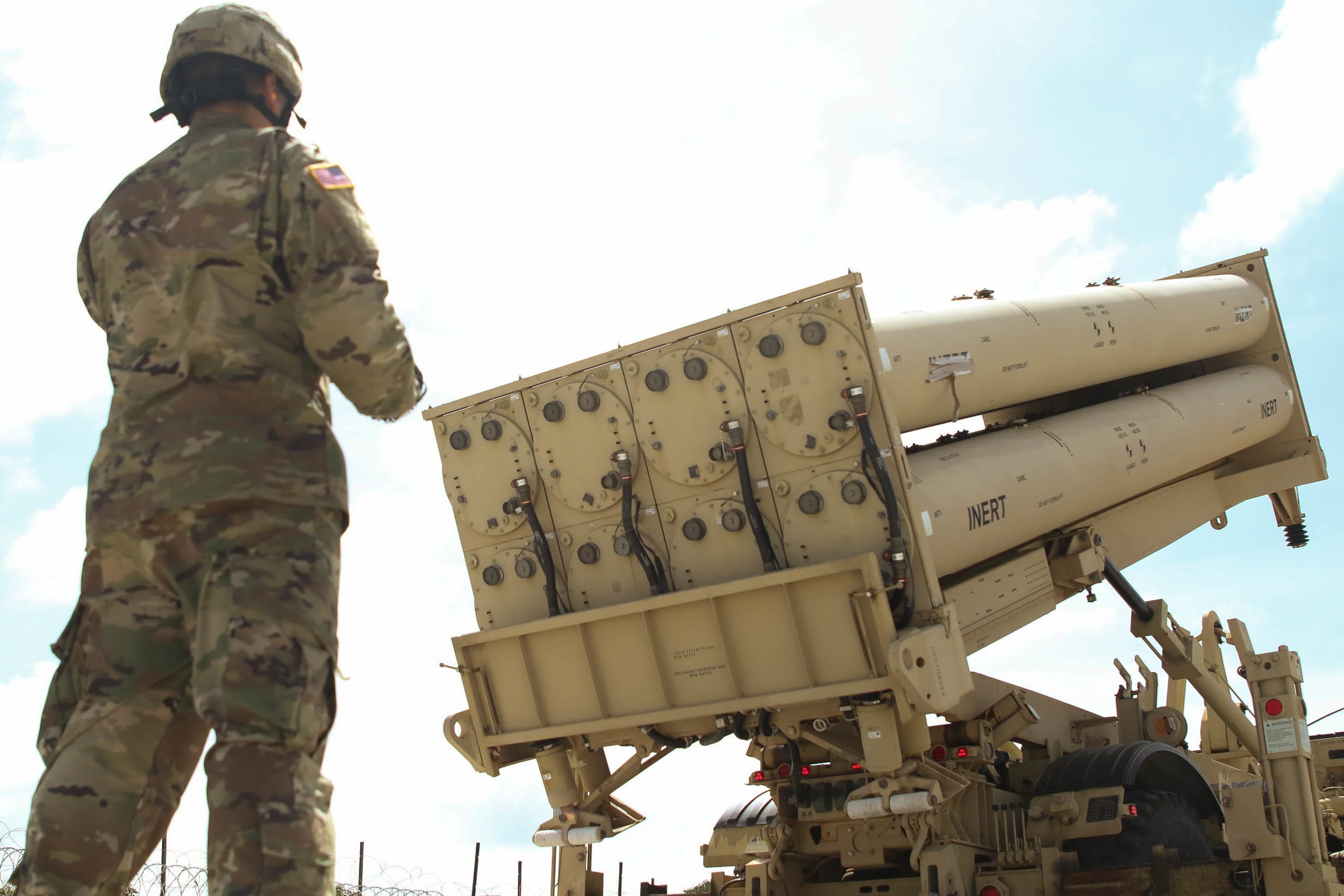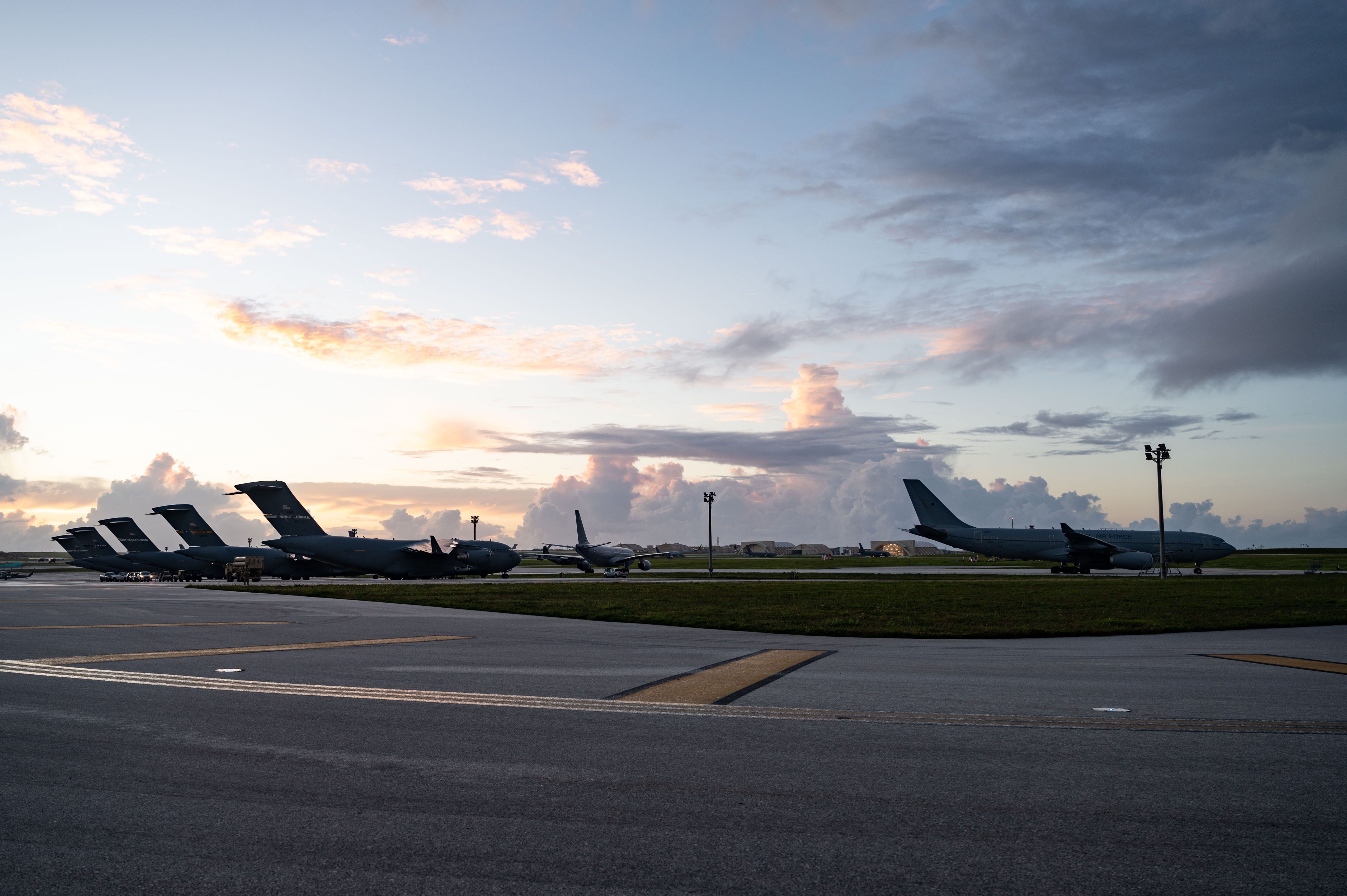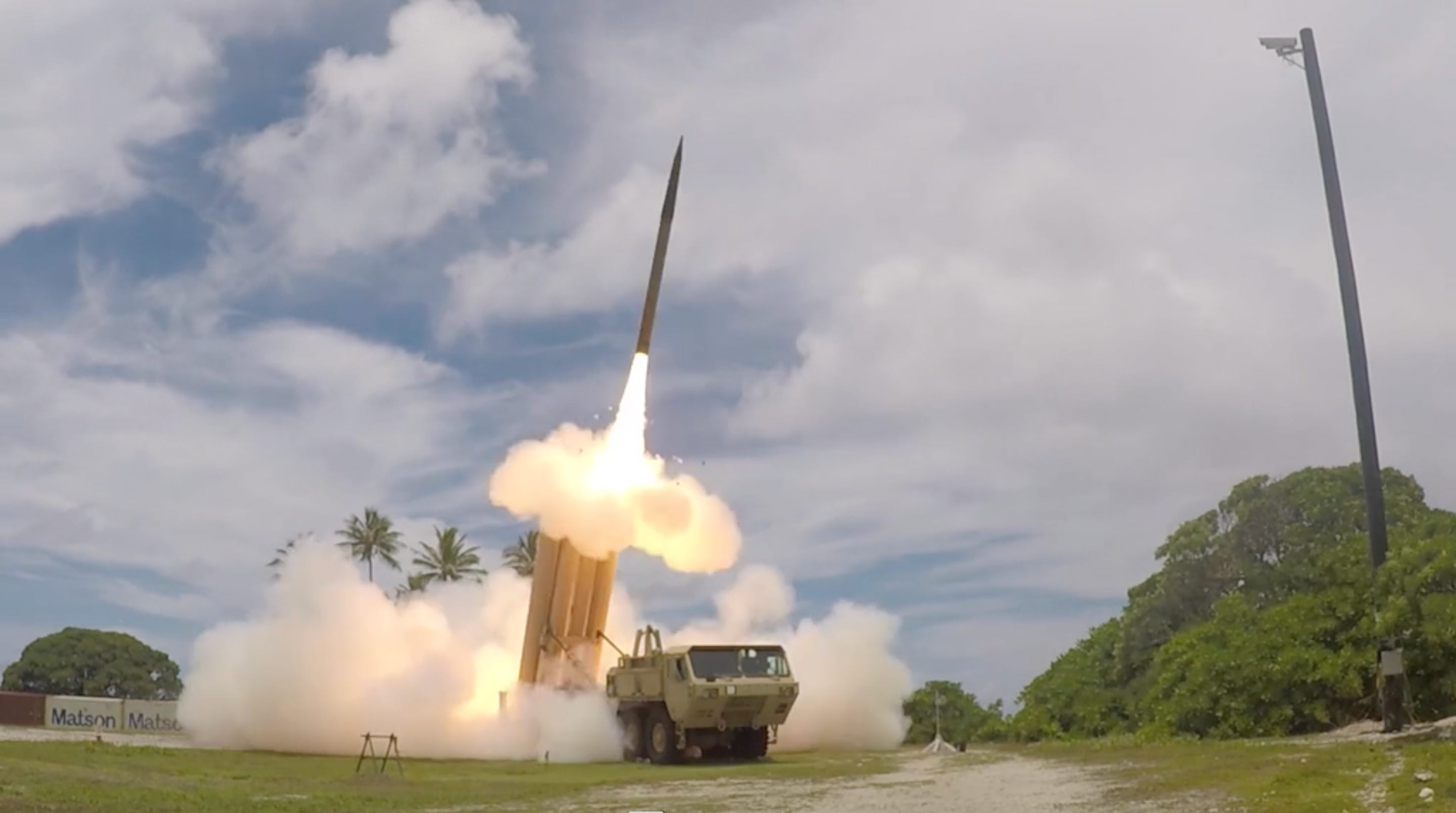
Army photo by Capt. Adan Cazarez
The US military’s plans for missile defenses on Guam are hitting major snags, per a new government watchdog report.
The problems range from a lack of strategy or timeline for sustaining the defense systems, Army logistics and maintenance issues, and unknowns over the housing and base services they’ll need.
Last week, the US Government Accountability Office released a report documenting the challenges facing the Department of Defense in its plan to develop an enhanced missile defense capability for Guam, or the Guam Defense System.
It’s been a top priority as China has built up its missile forces, putting US submarines and airfields there on the frontlines of a conflict.
The plan is to network interceptors, missiles, radars, and sensors to provide a 360-degree defense of the island, but the GAO said there are some holes. “DoD does not have a strategy that includes a timeline and a plan for determining when and how the lead organization — the military services or [Missile Defense Agency] — will assume responsibility for operating and sustaining those systems,” the report said.

U.S. Air Force photo by Staff Sgt. Bailee Ann Darbasie
DoD, GAO said, has suggested multiple military services could manage the GDS, further muddying a plan about who will take lead on what is one of the department’s larger and more complicated integrated air defense networks.
The GDS will involve 16 sites around Guam and is set for full installation between 2027 and 2032. It’ll cost around $8 billion, Lt. Gen. Robert Rasch, the joint executive officer for GDS, told the US Senate Armed Services strategic forces subcommittee earlier this month.
Per the GAO report, unanswered questions within DoD on who will operate and sustain GDS elements, and more broadly the number of personnel needed or a deployment schedule, has put the Army in a waiting position as they determine training, personnel, and facilities.
Some other DoD organizations have done their own estimates for some of these areas, but there are broader limitations facing housing, schools, medical facilities, and supermarkets as well that can’t be figured out until the Pentagon identifies how many service members it’ll need, the report noted.
The Army is also struggling to take care of its Terminal High-Altitude Area Defense (THAAD) missile battery that’s been deployed to the island for over a decade because the service lacks infrastructure. Army officials from Task Force Talon and the 38th Air Defense Artillery Brigade told the GAO they’ve had difficulties getting approval from the Navy for building facilities on the island; after a typhoon hit the island in 2023, the Army relied on the Marine Corps for hangars to protect THAAD launchers and radars.
The THAAD battery doesn’t have a dedicated maintenance facility, and Army vehicles undergoing maintenance were spotted by the GAO under temporary tarps, not a permanent facility. And Task Force Talon told the GAO their soldiers rely on bottled water due to the lack of clean drinking water in the area.

US Missile Defense Agency
All of this contributed to, the report said, “morale challenges” facing soldiers and Army civilians.
The Army’s plans to improve these issues have included establishing an office for managing the service’s presence on Guam, signing an agreement for negotiating installation support of facilities, and having Army planners present in Guam for further discussions.
Pentagon officials, experts, and lawmakers in Washington have continued raising the alarm about the threat of China’s massive missile arsenal to Guam. There has been a call from the Army for more air defenses with deeper magazines and concerns among US lawmakers about the vulnerability of US bases in the Indo-Pacific.
China’s People’s Liberation Army Rocket Force boasts thousands of missiles, including the DF-26, a solid-fueled intermediate-range ballistic missile nicknamed the “Guam Express” because it can reach the island that’s some 2,500 miles from Beijing.
While Chinese ballistic missiles haven’t been tested in combat, conflict experts have said the US could face a threat unlike anything it’s seen before if it were to go to war with China.
The post The $8 billion US scramble to defend Guam from China has glaring problems appeared first on Business Insider.




